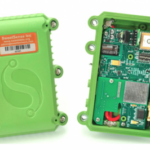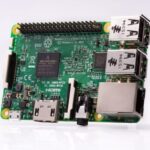Technology and engineering are pivotal forces driving sustainable development. As the global community grapples with environmental challenges, dwindling resources, and burgeoning populations, the need for innovative solutions has never been more pressing. While engineering and technology are agnostic toward climate change and the challenges of global poverty, the innovations in these seven categories have the potential to lead us towards a more sustainable future. Following each is an example from Engineering for Change’s Solutions Library, an open-access knowledge database of technologies and services addressing sustainable development challenges.
Data-driven decision making
 The advent of big data analytics and artificial intelligence has revolutionized the way we approach sustainable development. By collecting and analyzing vast amounts of data, decision-makers can gain valuable insights into environmental patterns, resource consumption, and societal needs. This data-driven approach enables more informed decision-making, leading to targeted and effective solutions.
The advent of big data analytics and artificial intelligence has revolutionized the way we approach sustainable development. By collecting and analyzing vast amounts of data, decision-makers can gain valuable insights into environmental patterns, resource consumption, and societal needs. This data-driven approach enables more informed decision-making, leading to targeted and effective solutions.
From the Solutions Library: Pix4Dfields Aerial drone mapping software for precision agriculture
Renewable energy
 Engineering plays a crucial role in the development of renewable energy technologies. From advanced solar panels to wind turbines and energy storage solutions, engineers are at the forefront of creating sustainable alternatives to traditional energy sources. Technological advancements in this field not only reduce our reliance on fossil fuels but also pave the way for cleaner and more efficient energy systems.
Engineering plays a crucial role in the development of renewable energy technologies. From advanced solar panels to wind turbines and energy storage solutions, engineers are at the forefront of creating sustainable alternatives to traditional energy sources. Technological advancements in this field not only reduce our reliance on fossil fuels but also pave the way for cleaner and more efficient energy systems.
From the Solutions Library: Solar-Powered Communal Refrigeration
Smart infrastructure
 The concept of smart cities powered by technology and engineering has gained traction as urbanization accelerates. Integrating sensors, connectivity, and automation into infrastructure allows for real-time monitoring and optimization of resource usage. Smart grids, intelligent transportation systems, and eco-friendly buildings are all examples of how technology-infused engineering is transforming urban landscapes for greater sustainability.
The concept of smart cities powered by technology and engineering has gained traction as urbanization accelerates. Integrating sensors, connectivity, and automation into infrastructure allows for real-time monitoring and optimization of resource usage. Smart grids, intelligent transportation systems, and eco-friendly buildings are all examples of how technology-infused engineering is transforming urban landscapes for greater sustainability.
From the Solutions Library: SweetSense sensors for monitoring humanitarian technologies
Circular economies through 3D printing
 Additive manufacturing, commonly known as 3D printing, is revolutionizing traditional production processes. By utilizing recyclable materials and reducing waste, 3D printing contributes to the concept of a circular economy. Engineers are exploring innovative ways to apply this technology to create sustainable products, from building materials to medical devices, with minimal environmental impact.
Additive manufacturing, commonly known as 3D printing, is revolutionizing traditional production processes. By utilizing recyclable materials and reducing waste, 3D printing contributes to the concept of a circular economy. Engineers are exploring innovative ways to apply this technology to create sustainable products, from building materials to medical devices, with minimal environmental impact.
From the Solutions Library: e-NABLE 3D-printed prosthetics
Internet of Things for resource management
 The Internet of Things (IoT) connects everyday objects to the Internet, allowing them to collect and exchange data. In the realm of sustainable development, IoT is instrumental in efficient resource management. Smart agriculture, for example, employs IoT devices to monitor soil conditions, weather patterns, and crop health, optimizing farming practices and minimizing environmental impact.
The Internet of Things (IoT) connects everyday objects to the Internet, allowing them to collect and exchange data. In the realm of sustainable development, IoT is instrumental in efficient resource management. Smart agriculture, for example, employs IoT devices to monitor soil conditions, weather patterns, and crop health, optimizing farming practices and minimizing environmental impact.
From the Solutions Library: Raspberry Pi 3 Model B low-cost electronics platform
Water management solutions
 Addressing water scarcity is a critical aspect of sustainable development. Engineers are leveraging technology to develop smart water management solutions. IoT-enabled sensors and data analytics help monitor water quality, detect leaks, and optimize water distribution systems. These innovations contribute to the efficient use of water resources, reducing waste and promoting sustainability.
Addressing water scarcity is a critical aspect of sustainable development. Engineers are leveraging technology to develop smart water management solutions. IoT-enabled sensors and data analytics help monitor water quality, detect leaks, and optimize water distribution systems. These innovations contribute to the efficient use of water resources, reducing waste and promoting sustainability.
From the Solutions Library: CT Suite smart water meters for prepay via mobile apps
Collaborative Platforms for Innovation
 Technology has facilitated global collaborations enabling experts from different fields to come together and brainstorm sustainable solutions. Online platforms, collaborative software, and virtual simulations empower engineers and innovators to work collectively on complex challenges. This collaborative approach fosters cross-disciplinary solutions that consider economic, social, and environmental aspects.
Technology has facilitated global collaborations enabling experts from different fields to come together and brainstorm sustainable solutions. Online platforms, collaborative software, and virtual simulations empower engineers and innovators to work collectively on complex challenges. This collaborative approach fosters cross-disciplinary solutions that consider economic, social, and environmental aspects.
From the Solutions Library: Ustad Mobile open-source interactive education app
A transformative force
In the pursuit of sustainable development, technology and engineering are dynamic and transformative forces. From harnessing the power of data to designing eco-friendly infrastructure and embracing collaborative innovation, the possibilities are vast. By leveraging the tools at our disposal, we have the potential to create a future where technological advancements not only drive progress but also harmonize with the planet, ensuring a sustainable legacy for generations to come.
Wycliffe Aoko is a guest writer for Engineering for Change.

